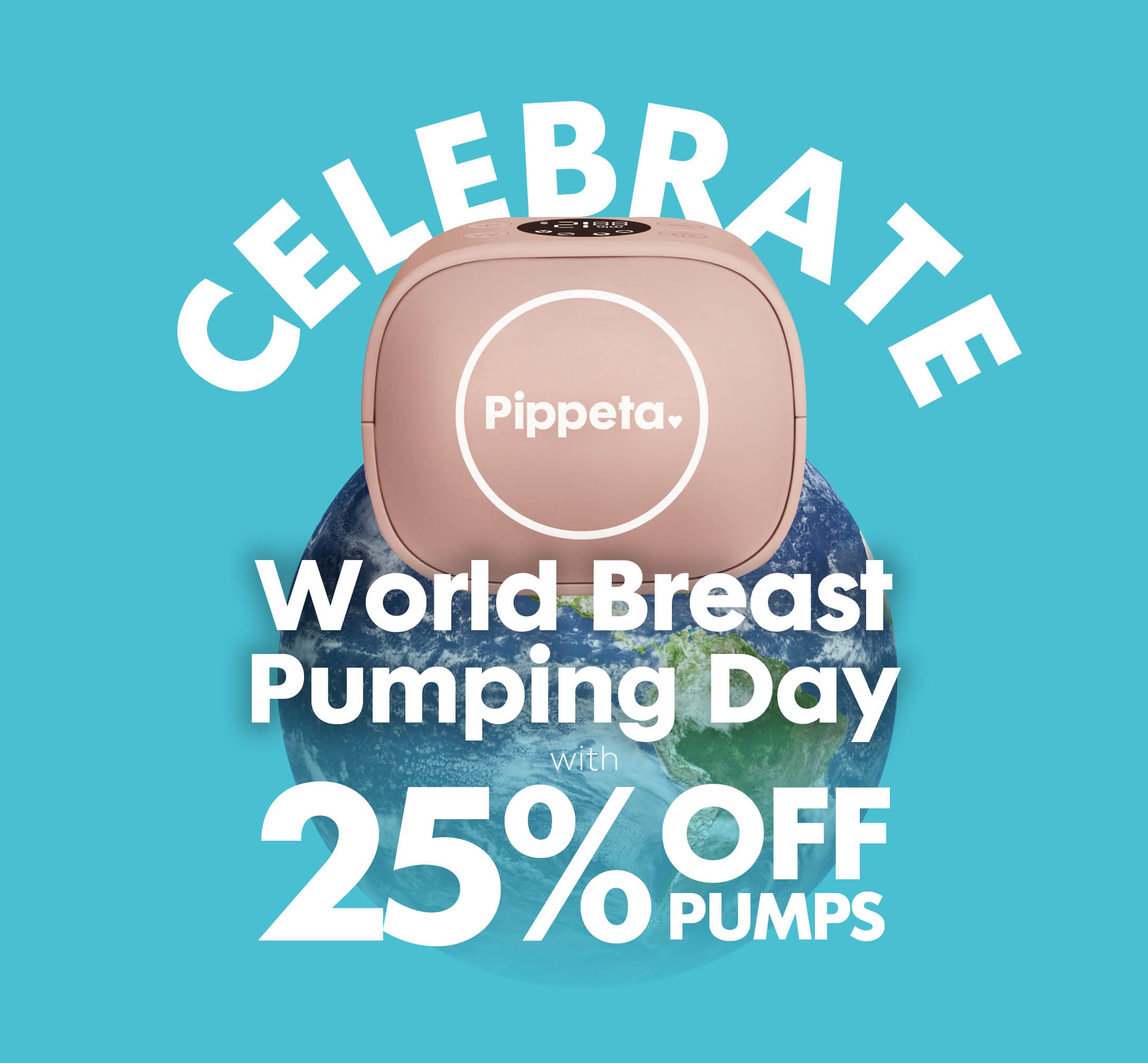Purchasing a breast pump can be a total minefield ‘we get it’ there are so many out there, so many different specs, some with fancy apps and some at prices that make them feel out of reach. So we decided to write you a comprehensive guide of what to consider before purchasing a breast pump, including our own!
1. Your personal needs and lifestyle
First of all, just like your pregnancy, birth and how and when your baby feeds will be different for everybody. Therefore, with this in mind when choosing a breast pump, you should choose one that’s right for ‘you’ and your family's needs. Don’t just go for the shiniest pump on the shelf or automatically presume the one with the highest price tag must be the best. Do your research!
Some examples of things to consider are as follows:
Premature birth: If you know that you are going to have your baby prematurely the likelihood is that you won’t be able to initially feed your baby(s) directly from the breast. Therefore, the hospital should have specialised rental pumps available for you to ensure you can express milk to meet your baby's needs. These pumps can often be more trying and mean you have to remain static. You may want a portable pump on hand at the hospital so you have a little bit more freedom at times especially when it comes the time that you can hold your baby and use their snuggles to create that all important oxytocin boost. What’s more when it comes time to take your precious little ones home, you will need a breast pump that allows you to maintain your supply and ensure you continue your feeding routine at home. That’s where the handsfree wearable pumps truly come in handy.
Busy families on the go: If you are a self-employed mum planning on working from home or you are planning to return to work after your maternity leave or are just a busy family in general, you want to avoid having to double-purchase a breast pump and just purchase one that will be convenient for all stages of your feeding journey. Electric breast pumps can be faster and are usually the preferred option if you will be expressing regularly, if you have a baby in special care or are returning to work. In that case if this isn’t you and you intend on exclusively breastfeeding or only pumping occasionally then a manual breast pump may be all that you need.

Tech Tastic Pumps: The market is currently flooded with electric breast pumps that push tech down your neck and we are aware that in 2025 pretty much everything runs through your phone but we can’t help but hold the opinion that this can be distracting and often unnecessary during such a challenging but precious time in our parenting and feeding journey and their use can run the risk of inducing added anxieties or pressures on Mum.
From both customer and market research we have found that parents felt the pressure and reduced bonding time what's more, those that did use them found themselves ceasing when they drew very little data from them or realised that they decided to follow their own gut and signals from baby without unnecessary worry.
One parent states;
“What I just realised is that it’s completely driving me insane. I was feeling chained to my phone that I needed to have it with me every time I picked my baby up, and I was constantly checking his stats but with no real information coming out of them. He’s a great, frequent eater so we were never on a prescribed feeding schedule, and most of the time my breasts tell me which one was the last one he was on. I think the truth is for us, our newborn has no patterns and no right button to press at a certain time, and just because the data is there doesn’t mean we need it.”
2.Comfort and fit: Flange sizes are key
Another important thing to consider when purchasing a breast pump is ensuring you find the correct flange size! This is essential for comfort and effective milk expression. Proper sizing helps ensure better milk flow, reduces discomfort, and minimises risks like clogged ducts or mastitis by supporting efficient milk removal. Incorrect sizing can lead to issues such as nipple pain, reduced milk output, or unnecessary expenses if the breast pump is mistakenly blamed for discomfort. Many IBCLC clinics offer flange fitting services to help you get it right. With every Pippeta pump purchase, you also receive free expert IBCLC support—email us at hello@pippeta.co.uk, and our team will be happy to assist!
Most breast pumps on the market come with flanges included in the box, however if your correct size isn’t in the box you can request these from us as a brand and we can point you in the right direction. You can find out exactly what is included in the Pippeta pump box in the descriptions here.

3. Do I need two pumps or just one?
Using two breast pumps simultaneously can be beneficial in specific situations for breastfeeding mothers. Here’s an overview of when it might be necessary, and the potential risks of using two pumps when not needed:
When is it necessary to use two breast pumps?
Exclusively Pumping: If you are not directly breastfeeding your baby (e.g. if the baby is born prematurely or has latching difficulties), using a double breast pump can help maintain and boost milk supply by replicating your baby's natural feeding pattern.
Increasing Milk Supply: Research suggests that double pumping can stimulate both breasts simultaneously, leading to higher prolactin levels and encouraging increased milk production.
Time Efficiency based on your lifestyle demands: For mothers with a busy schedule (which lets face it, is most of us), for example, you are working from home, busy with other siblings or are planning to return to work after your maternity leave, using two breast pumps is faster and can save precious minutes,
Storing Milk for Later Use: Double pumping is super helpful if you're building a freezer stash of breast milk for returning to work, those tiring nighttime feeds, or sharing feeding responsibilities with other caregivers.
Managing Engorgement: Pumping both breasts at once can relieve discomfort and could potentially reduce the risk of issues like clogged ducts or mastitis. However, if you are experiencing any breast pain do consult your GP or a professional lactation consultant (IBCLC).
Risks of using two pumps when not necessary:
Overproduction of Milk (Oversupply): Over pumping can lead to an oversupply of milk, causing discomfort, engorgement, or clogged ducts. An oversupply can also lead to foremilk-hindmilk imbalance, which might affect the baby’s digestion.
Nipple Trauma or Soreness: Pumping excessively or unnecessarily can lead to sore or cracked nipples, especially if the pump settings are too high or the flanges do not fit properly.
Time and Energy Drain: Pumping with two breast pumps when it's not needed can feel like an added burden and lead to stress or burnout, especially if it’s not really benefitting you at all.
-
Unnecessary Equipment Expense:
If double pumping isn’t essential for your situation, purchasing or maintaining an additional pump could be an unnecessary financial burden. -
Potential for Reduced Skin-to-Skin Time:
Over-use of your breast pump might reduce direct breastfeeding or skin-to-skin contact, which is important for bonding and milk production and let’s face it that’s the best part of the journey.
4. Suction Level: Do I need a hospital grade pump
You may have heard the terms ‘Hospital grade’ and ‘Hospital strength’. The term hospital grade is generally a term used for the specialised rental pumps mentioned earlier in this posts and are usually found in NICU wards or rented out for parents to use at home in special circumstances. In many cases, the term hospital strength is used purely for marketing purposes and can confuse parents attempting to navigate the world of breast pumps.
For most breast pumps, hospital strength simply means that the unit has customisable and powerful enough suction settings, to ensure Mums can express breast milk efficiently. For example all Pippeta breast pumps would be considered hospital strength as they have 12 customisable suction levels and four massage modes that mimic babies natural pull of the nipple in their mouth. You can usually find a setting that suits you and then increase the intensity of suction based on your individual needs and comfort level. A hospital strength pump should be sufficient for most Mums planning on expressing breast milk regularly and are still available in portable form to make them easy for mums on the go,
5. Value and affordability
When all is said and done, no matter what your preferences are you have to find a pump that fits into your budget. Despite this, you want something that doesn’t scrimp on design. At Pippeta we prioritise affordability and accessibility without compromising on quality. Unlike larger brands with hefty costs, we offer a hands-free pumping experience at a much more reasonable price. We understand the financial strain of parenting and believe that every family deserves access to affordable, high-quality breastfeeding solutions. Our mission is to empower families on their breastfeeding and weaning journeys by providing accessible products that enhance their experience without breaking the bank. This is why we have had many nominations for the 'best affordable breast pump'.
Conclusion
In conclusion, choosing the right breast pump is a deeply personal decision that should reflect your individual needs and lifestyle. Whether you’re navigating the challenges of a premature birth, balancing a busy family schedule, or seeking simplicity over tech-heavy features, the goal is to find a breast pump that supports you and your baby throughout your unique feeding journey.. And remember! Always consult a lactation consultant or healthcare professional, such as an IBCLC, to tailor a pumping strategy to your unique needs. Take the time to research and invest in a solution that truly works for you—because your comfort, confidence and bank balance matter most.
Read our reviews here as part of your research https://www.reviews.co.uk/company-reviews/store/pippeta.com
Further Reading:
Pumping Milk:https://llli.org/breastfeeding-info/pumping-milk/
Managing plugged ducts, mastitis when breastfeeding:
What happens if you use a mobile phone whilst breastfeeding: https://www.motherhoodchaitanya.com/what-happens-if-you-use-mobile-phone-while-breastfeeding/
Baby-tracking apps can trigger anxiety in new parents here’s how to avoid it:
https://www.businessinsider.com/baby-tracking-apps-can-trigger-anxiety-in-new-parents-2021-8
Hospital strength vs. Hospital grade breast pumps- what’s the difference?: https://pumpsformom.com/breast-pump-101/hospital-strength-vs-hospital-grade-breast-pumps-whats-the-difference/?srsltid=AfmBOoqH0RafaXSjfTFWcl50iRPrxFvdwTheAzrc9JtyCc_VKpHrtGE6
Resources:
Hill PD, Aldag JC, Chatterton RT. The effect of sequential and simultaneous breast pumping on milk volume and prolactin levels: a pilot study. J Hum Lact. 1996 Sep;12(3):193-9. doi: 10.1177/089033449601200315. PMID: 9025426.
Sakalidis VS, Ivarsson L, Haynes AG, Jäger L, Schärer-Hernández NG, Mitoulas LR, Prime DK. Breast shield design impacts milk removal dynamics during pumping: A randomized controlled non-inferiority trial. Acta Obstet Gynecol Scand. 2020 Nov;99(11):1561-1567. doi: 10.1111/aogs.13897. Epub 2020 Jun 5. PMID: 32401335; PMCID: PMC7687096.
Abou-Dakn M, Richardt A, Schaefer-Graf U, Wöckel A. Inflammatory Breast Diseases during
Lactation: Milk Stasis, Puerperal Mastitis, Abscesses of the Breast, and Malignant Tumors - Current and Evidence-Based Strategies for Diagnosis and Therapy. Breast Care (Basel). 2010 Mar;5(1):33-37. doi: 10.1159/000272223. Epub 2010 Feb 16. PMID: 22619640; PMCID: PMC3357165.















Leave a comment
This site is protected by hCaptcha and the hCaptcha Privacy Policy and Terms of Service apply.